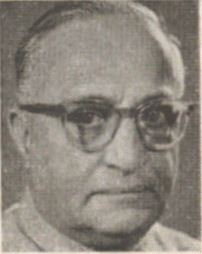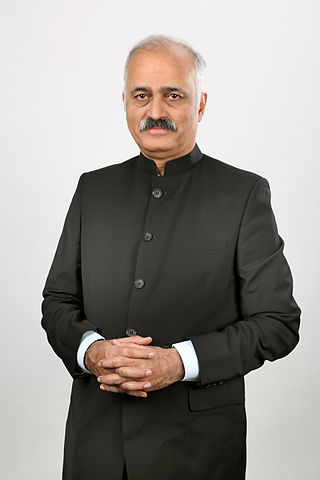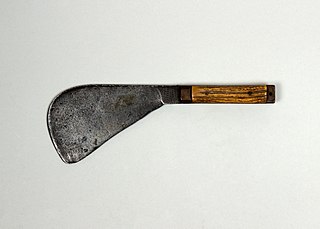The Kodava is a Dravidian language spoken in Kodagu district (Coorg) in Southern Karnataka, India. It is an endangered language. The term Kodava has two related usages. Firstly, it is the name of the Kodava language and culture followed by a number of communities from Kodagu. Secondly, within the Kodava-speaking communities and region (Kodagu), it is a demonym for the dominant Kodava people. Hence, the Kodava language is not only the primary language of the Kodavas but also of many other castes and tribes in Kodagu. The language has two dialects: Mendele and Kiggat.

Kodagu district is an administrative district in the Karnataka state of India. Before 1956, it was an administratively separate Coorg State at which point it was merged into an enlarged Mysore State.

The Kodavas also called Coorgs are an endogamous Dravidian ethnolinguistic group from the region of Kodagu in the southern Indian state of Karnataka, who natively speak the Kodava language. Kodavas worship ancestors, nature, and weapons such as swords, bows, arrows, and later guns.
The Bunt people are an Indian community who historically have inhabited the Tulu Nadu region in South India. Bunts were traditionally a warrior-class or martial caste community, with agrarian origins, forming the landed gentry of the region. They are the dominant land-owning, farming and banking community of Tulu Nadu and speak Tulu and Kundagannada as their mother tongue. Today, the Bunts are a largely urbanised community, with a population size of less than one million worldwide.

The district of Kodagu in present-day Karnataka comprises the area of the former princely state of the same name.
The clan of Kodavas in the Indian state of Karnataka have a long history of association with the game of field hockey. The district of Kodagu which is the land of the Kodavas is considered as the cradle of Indian hockey. More than 50 Kodavas have represented India in international hockey tournaments, out of which 7 have also participated in Olympics. B P Govinda, M P Ganesh, M M Somaiya, C S Poonacha are some of the prominent Kodavas who have represented India. The passion for hockey in Kodagu is so much that more than 200 families participate in an annual hockey festival. This festival is recognised as one of the largest field hockey tournaments in the world and has been referred to the Guinness Book of Records. However it has already found a mention in the Limca Book of Records, which is an Indian variant of the Guinness Book.
Karnataka, with a total population of 61,100,000, is one of the major states in South India. Kannada is the official state language, while other linguistic minorities in the state include Kodava, Konkani, Tulu and Urdu. Karnataka is also at the forefront of population control measures, with the first two birth control clinics in history opening in 1930 in the Mandya district.

Cheppudira Muthana Poonacha was the Chief Minister of Coorg, Minister in Mysore State, Member of Parliament, Union Railway Minister of India and Governor of Madhya Pradesh and Governor of Orissa.
Karnataka is a state in the southern part of India. It was created on 1 November 1956, with the passing of the States Reorganisation Act. Karnataka is bordered by the Arabian Sea to the west, Goa to the north-west, Maharashtra to the north, Telangana and Andhra Pradesh to the east, Tamil Nadu to the south-east, and Kerala to the south-west. The state covers an area of 74,122 sq mi (191,976 km2), or 5.83% of the total geographical area of India. It comprises 30 districts. Kannada is the official language of Karnataka and as per the 2011 census is the mother tongue of 66.5% of the population. Various ethnic groups with origins in other parts of India have unique customs and use languages at home other than Kannada, adding to the cultural diversity of the state. Significant linguistic minorities in the state in 2011 included speakers of Urdu (10.8%), Telugu (5.8%), Tamil (3.5%), Marathi (3.4%), Hindi (3.2%), Tulu (2.6%), Konkani (1.3%) and Malayalam (1.3%).
Bācamāḍa Ḍevaiah Gaṇapati (1920–1997) was an Indian writer, scholar and journalist writing in English, Kannada and Kodava Takk, covering religion, anthropology and philosophy. He is particularly noted for his coverage of the Kodagu (Coorg) region and the Kodava ethno-linguistic group, his own birthplace and community.

Coorg State was a Part-C state in India which existed from 1950 to 1956. When the Constitution of India came into force on 26 January 1950, most of the existing provinces were reconstituted into states. Thus, Coorg Province became Coorg State. Coorg State was ruled by a Chief Commissioner with Mercara as its capital. The head of the government was the Chief Minister. Coorg State was abolished on 1 November 1956 as per the States Reorganisation Act, 1956 and its territory was merged with Mysore State. Currently, Coorg forms a district of Karnataka state.

An ainmane is the ancestral house of a clan with roots in Kodagu.

Palanganda T. Bopanna is an author and journalist from Kodagu (Coorg) in Karnataka, India. Bopanna has worked for some of the leading Indian English dailies, including The Times of India, Bangalore, for 12 years, and The Pioneer, as their Special Correspondent (Bangalore) for 13 years. He has written five books.

Nalvathoklu is a small village in Kodagu district of Karnataka state in India.

Pichangatti is a broad-bladed knife of the Kodavas of Karnataka, India. The characteristic of the pichangatti is its silver hilt with bulbous-shaped pommel in the shape of a parrot's head. The pichangatti features in the traditional male dress of the Kodavas.This is a weapon used only by kodavas

Ayudha katti is an indigenous weapon of war and tools to the Kodava people of Kodagu, in the state of Karnataka, India. The ayudha katti is developed from an implement used to cut through dense undergrowth. Unlike most blades, the ayudha katti is worn without a sheath.
Chandra Varma is the name of the legendary ancestor of the Kodavas.
Nitin Kushalappa is an Indian author of books and articles.









